The Vestibular System is located within the inner ear and responds to movement and gravity contributing to the development of balance, equilibrium, postural control, muscle tone, maintaining a stable visual field while you are moving, and bilateral coordination. This system can also be related to difficulties with attention, organization of behavior, communication, and modulation of arousal level. The input involves movement of the head through space and can be angular, linear, or rotating in direction. The impact of vestibular stimulation can vary depending on the type of input. In general, slow, rhythmical, linear movement in one direction, using grounded equipment tends to be calming and inhibitory to our nervous system. Whereas fast-paced, angular, jerky, non-rhythmic movement with changes in directions tend to be more alerting and excitatory.
The vestibular system, in combination with additional sensory systems, can influence everyday functioning in the home, school, and community environments. Some examples of activities it can impact are sitting upright in a chair, balancing on one foot to put clothes on, playing hopscotch and jump rope, bike riding, roller skating, skiing, watching a rolling soccer ball while running to kick it, and using the two sides of the body together to perform activities such as cutting with scissors or performing jumping jacks.
Activities which promote vestibular input:
These activities should always be used under the guidance of your child’s occupational, physical, or speech therapist.
Playing on most playground equipment including swings, which allow for both linear (straight line) and rotary (circular) swinging and slides. It is very important to allow the child to regulate the amount of rotary input himself, and if the child becomes dizzy or nauseated, he needs to stop.
Jumping on trampolines, cushions, bed. If using a trampoline try to make games for the child to increase his interest such as jumping to music, throwing beanbags at objects, throwing balls or water balloons.
Install a hook in the home, garage or outside from which various swings can be hung.
-
Tumbling activities such as somersaults.
-
Dance or movement activities.
-
Bouncing on Hippity Hop or bouncing through an obstacle course on a Hippity Hop.
-
Upside down positions such as hanging from knees on a trapeze or jungle gym.
-
Roller skating/Ice Skating.
-
Swimming
-
.Rolling in different ways such as in or on a barrel, tire, or old blanket or down a hill on grass.
-
Rocking activities such as rocking chair or rocking horse.
-
Slip and Slide.
-
Have the child lying on a scooterboard or skateboard. Have him hold onto a rope or hula-hoop and pull him, or have him propel himself using hands.
-
Children’s commercial ride equipment such as can be found outside a grocery store.
-
Bike Riding.
-
Being spun around like an airplane, cartwheels, dancing.
-
Horseback rides.
-
Move-n-Sit cushions.
-
Therapy balls/exercise balls/T-stools or backless chairs with feet reaching the floor – sitting or in prone when watching TV or during tabletop tasks.
-
Wagon rides, sliding down a hill on cardboard.
-
Merry-go-Rounds/Carousel.
-
Sit-n-Spin.
-
Spinning on an office chair.
-
Swing on a hammock.
